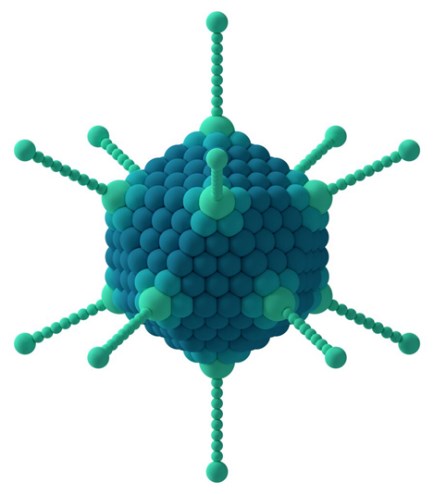Oncolytic Viruses in Fibrous Histiocytoma Treatment
Malignant fibrous histiocytoma (MFH), originated from mesenchymal cells, often arises from soft tissue or bone, usually in the extremities or retroperitoneum. It is classified under the undifferentiated/unclassified sarcomas group, usually as the most common soft-tissue sarcoma (STS) in late adult life. MFH has been categorized into five subtypes: (a) storiform/pleomorphic, (b) myxoid, (c) giant cell, (d) inflammatory and (e) angiomatoid. The most common symptoms of MFH include pain and swelling. Once a soft tissue sarcoma is suspected, it is typically necessary to perform an MRI test to determine if there is a tumor in the area and the full extent of the tumor. Unfortunately, standard treatment guidelines for MFH do not exist currently.
Conventional Treatments for MFH
Usually, multidisciplinary approach or combination therapy is used to block or control tumor growth. Surgical management remains the main treatment, by which, doctors can remove the tumor so it is unable to continue growing or to spread to other areas of the body through the bloodstream or lymph system. Radiotherapy and chemotherapy in adjuvant settings have only limited effectiveness. Statistics found that approximately 40% of patients will develop local recurrences or distant metastases with a 10%-30% 5-year survival rate. Therefore, there is an urgent need for novel effective therapy development.
Oncolytic Virotherapy for MFH
Oncolytic virotherapy (OVT), the selective killing of tumor cells by viruses, is emerging as a plausible biological therapy for cancer. OVT induces lytic cell death in tumor cells without affecting normal cells and shows direct cytotoxicity and immune-stimulatory effects. Research of OVs for the treatment of MFH has improved over the past decade with many types of OVs developed, including adenovirus (Ad), vaccinia virus (VACV), poliovirus, etc.

- Adenovirus is widely and frequently used as a virus vector in oncolytic virotherapy. Ad contains a 36 kb double-stranded, linear DNA genome, encoding early genes (E1A, E1B, E2, E3, and E4) and late genes (L1-L5). Early genes mainly encode corresponding proteins that are expressed early during viral replication whereas late genes are expressed after the commencement of viral replication and encode for capsid proteins.
Scientists have generated three types of oncolytic adenoviruses, which drive the expression of the adenoviral E1A and E1B genes under the control of the hTERT (human telomerase reverse transcriptase-encoding gene) promoter, providing tumor-specific virus replication. Data shows that viruses induce the antitumor effect via induction of autophagy and apoptosis, or exhibit a profound antitumor effect via activation of the p53 signaling pathway.
- Poliovirus is a non-enveloped plus-strand RNA virus belonging to the Picornaviridae. Ig superfamily molecule CD155 (also known as poliovirus receptor: PVR and nectin-like molecule-5: Necl-5) is essential for poliovirus to infect and induce death in neural cells.
CD155 can be selectively expressed on malignant fibrous histiocytoma, and live attenuated poliovirus (LAPV) can cause growth suppression of the MFH by inducing apoptosis by activating caspases 7 and 3.
- VACV is a double-stranded DNA virus of the Poxviridae family, which has many favorable characteristics, including the ability to infect a wide range of tumor types with efficient infection and gene expression, and potent lytic activity, selectively target and infect cancer cells in vivo, all of which make it an excellent candidate for recombinant viral therapy.
A recombinant, replication-competent VACV expressing transgenes for Renilla luciferase, green fluorescent protein (GFP), and β-galactosidase, which has been shown to have potent direct oncolytic effects against human sarcoma (including MFH) in vitro and in vivo.
Although the results are promising, a better understanding of the viral tropism for the cells may enhance the specificity of viruses for cancer cells and improve the viral replication in cancer cells. Therefore, novel strategies for oncolytic virus engineering have been developed to optimize the construction of OVs, to reduce their clinical toxicity, to construct efficient OV delivery platforms, and to increase the efficacy of OVs, etc.
